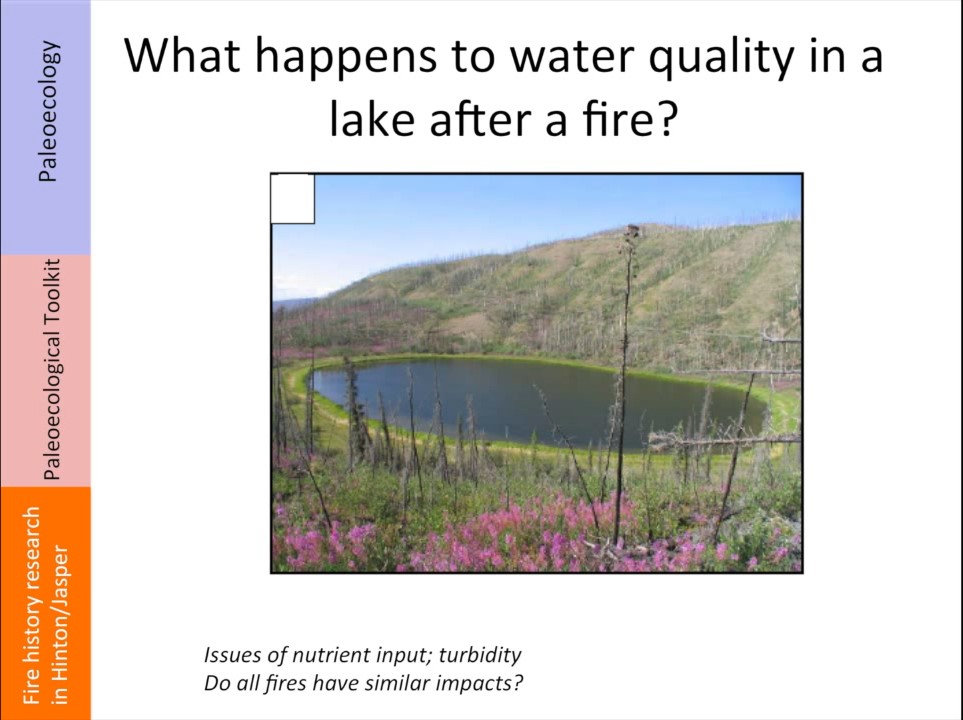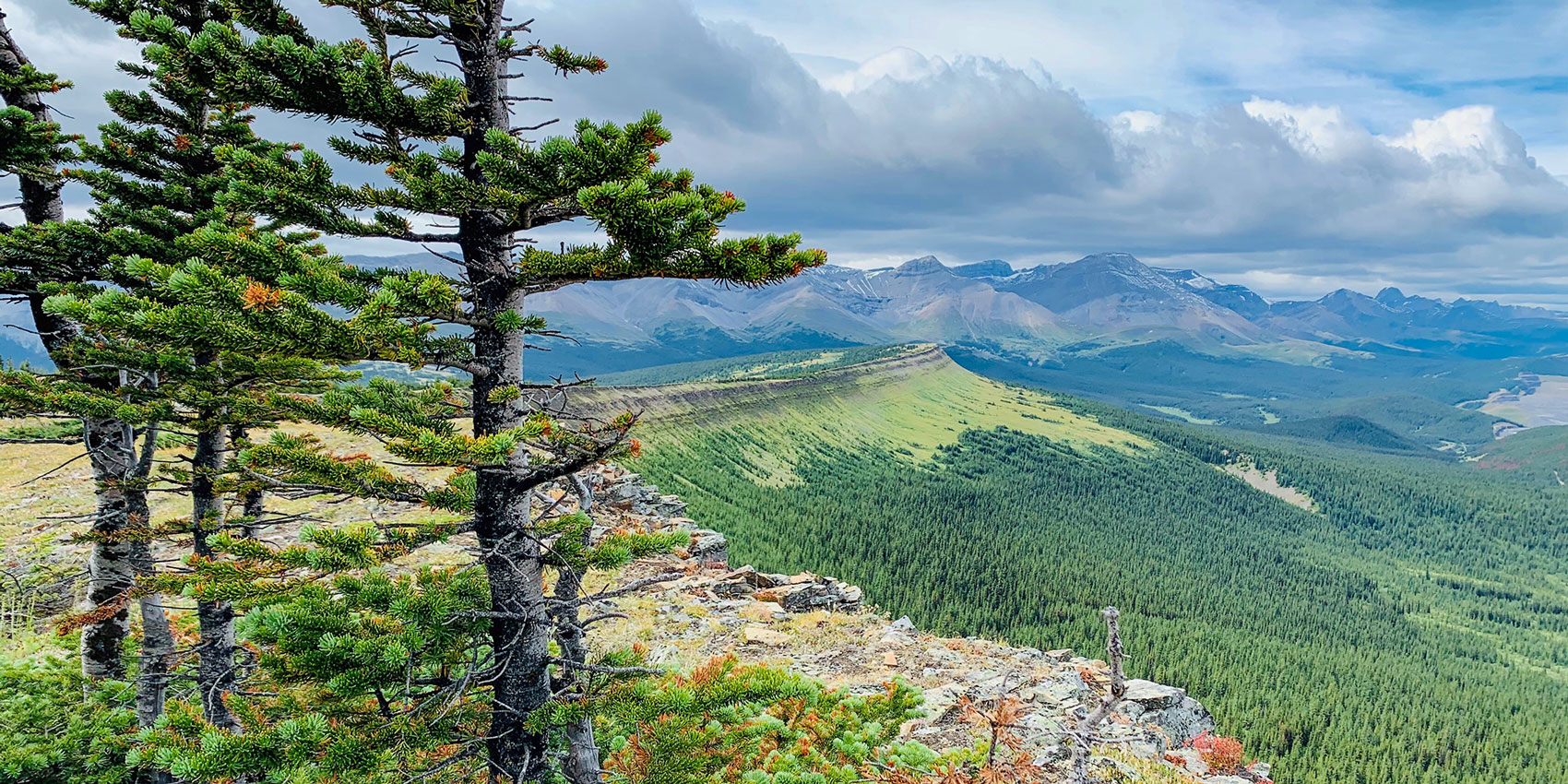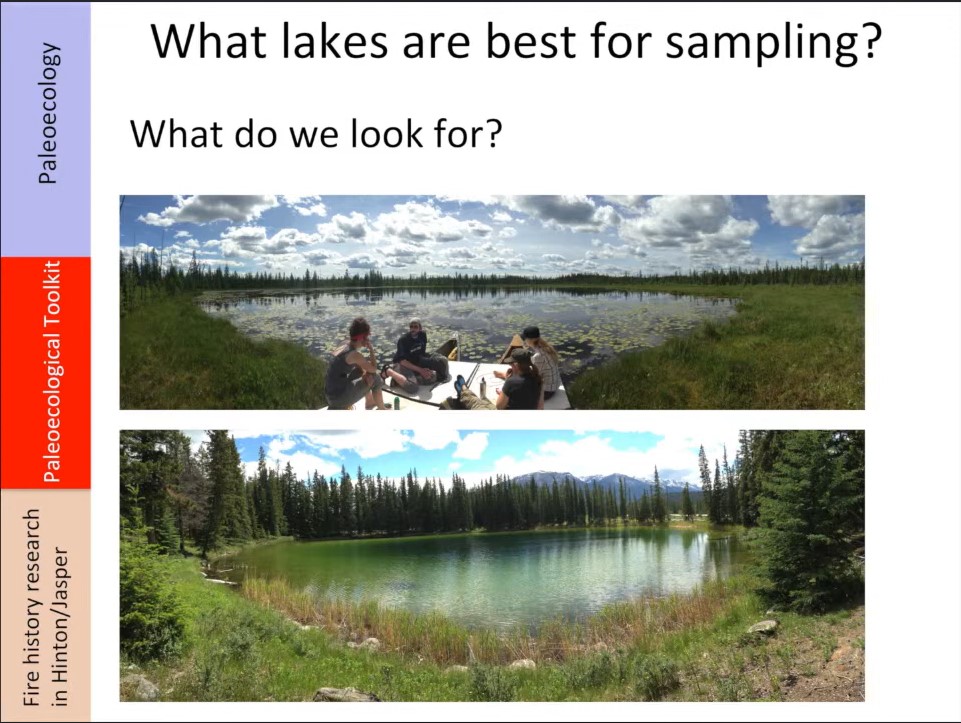
In Part 2 of his presentation, Dr. Michael Pisaric describes how cores of lake sediments are dated. Geochronology is the main tool for dating lake core sediments (Carbon 14 dating of organic matter in the sediment, volcanic ash events, Cesium from atomic bomb testing). He then describes what has come from analysis of a small lake next to Jasper Park Lodge, Jasper National Park. The cores of lake sediments allow interpretation of fires frequency and severity back 2000 years. Combined with tree ring coring, the mean fire frequency is about 36 years; this agrees surprising well with tree ring data. Combined with data from other lakes, interpretations on climate and aspect can be made (e.g. Colin et al 2013, J. of Biogeography on the Late Holocene in SE British Columbia).
Dr. Pisaric describes the analysis that came from the Kootenay analysis, aspect and climate effects. He concludes by describing the Jasper National Park study specifically and what are the effects of fire on lakes (and have they changed over time). He discusses in particular eutrophication and fires potential role in eutrophication.
Dr. Michael Pisaric is an Associate Professor at Brock University, St. Catharines, Ontario. His presentation was part of the July 10, 11 2013 Workshop and Tour on Burning Issues in Alberta’s Forests: Fire Regimes in the Montane Forests of the Alberta Foothills and Jasper National Park. The workshop was sponsored by the Healthy Landscapes Program at the Foothills Research Instititute, Hinton, Alberta.








